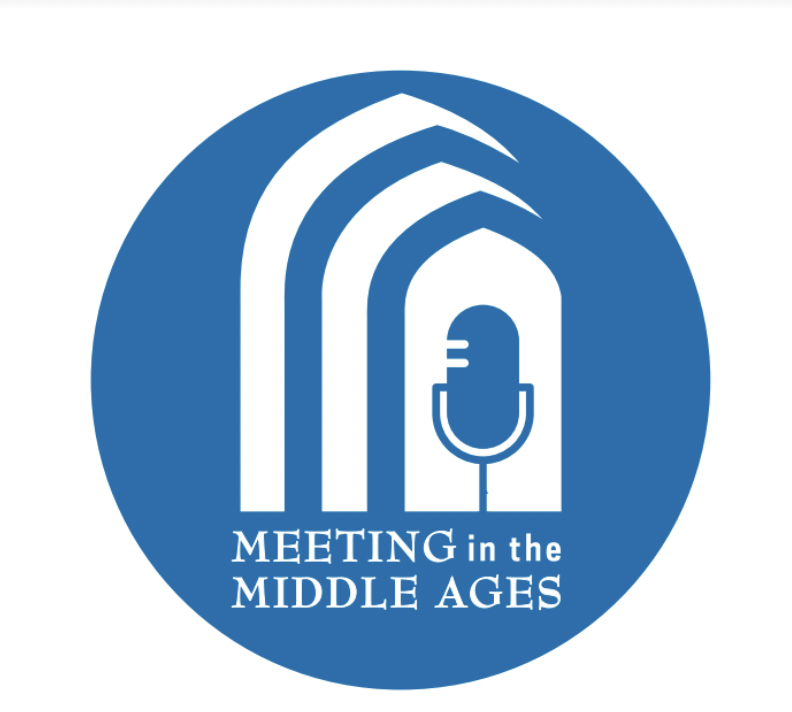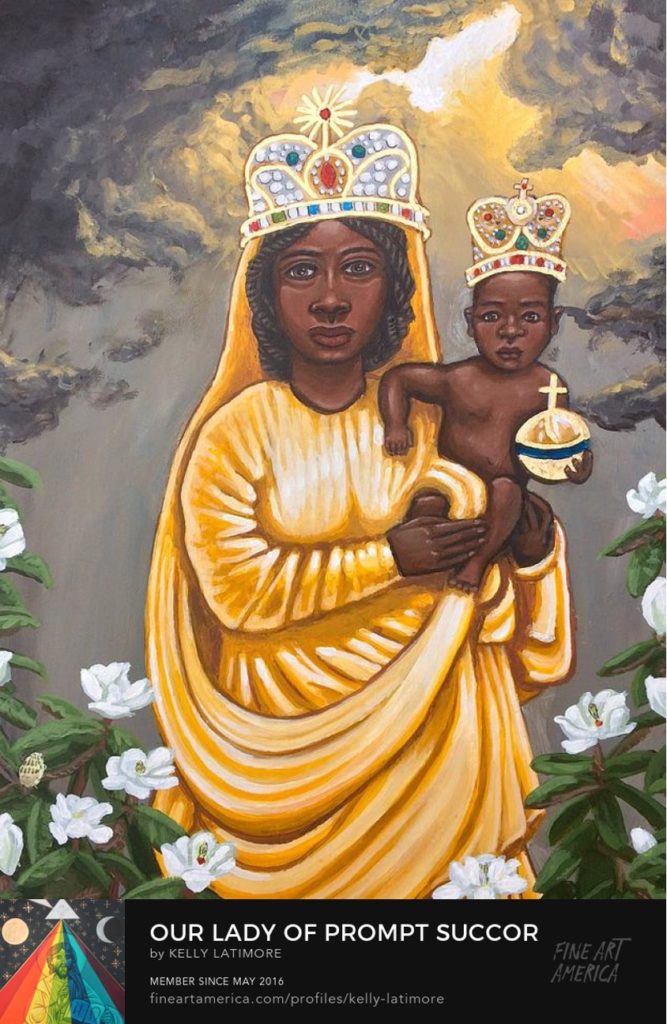In recent years, medieval studies has been at the center of major conversations about accessibility, inclusion, and the broader future of a humanistic education. Sierra Lomuto writes that medieval studies is “undergoing a disciplinary crisis” and is “a battleground: it is either a last priority because its inaccessibility masks its relevance to pressing concerns of the present, or it becomes a priority because it symbolizes tradition for those who want to hold onto Eurocentric narratives about the past”[1]. Medieval studies needs to change if it wishes to continue. The status quo cannot hold. Scholars and institutions have begun taking steps to address major, structural aspects of the field that have long made it exclusionary and impenetrable to people. Not only is this important for the future viability of the field, but it is also crucial for reaching those outside of academia. There is such great potential for scholars to make positive impacts on everyday people and their ideas about – as well as encounters with – the Middle Ages. Crises, though scary, can be major catalysts for change. Indeed, the field and its relationships to those around and outside the academic world are changing.
As the Medieval Institute’s Public Humanities Postdoctoral Fellow for the 2023-2025 academic years, I am in a unique position to observe these changes and think about how to make meaningful connections between the Middle Ages and the broader public. In other words, these changes excite me because they present so many incredible opportunities to open up medieval studies to people. As a scholar whose research engages with questions of identity, community, and belonging, it is such an honor that I get to consider how medieval studies can enrich our local communities. My work at the Medieval Institute involves planning and implementing programming that reaches a wide audience. I want to change people’s relationships to the Middle Ages for the better. I am committed to answering some major questions: why should people care about the Middle Ages? How do we get people to care about the Middle Ages?
Getting people to care about the Middle Ages is no easy task. It is important for medievalists to understand how daunting the field can be for those in and outside of academia – medieval studies can be quite an inaccessible field. The Middle Ages encompass an incredibly large swath of time and geographical spaces. Preconceived notions about the Middle Ages being dull still exist. For some people, the field’s long history of Eurocentrism can be a turnoff. Others may have caught wind of the field’s exciting interdisciplinarity but may not know where to start exploring all the material out there. Furthermore, language barriers present challenges. There are so many unfortunate hurdles, and as scholars we should strive to remove as many as we can so that people can appreciate the importance of the field.
The Middle Ages matter because – the way I see it – they belong to everyone. It is a vibrant, rich past that everyone can benefit from exploring. It is a time of encounter and of exchange. Networks of people from all over the world are being constructed and deconstructed throughout the Middle Ages. Knowledge and ideas are spreading through these networks of exchange. Scholars have only begun to scratch the surface of this vast interconnectedness and how their legacies bring to bear on our contemporary, globalized world. Indeed, we can learn so much about the present and future through deep engagement with our past.
The field must change so that scholarly work can be easily shared among researchers, allowing for innovative interdisciplinary avenues to be explored. Peer institutions have taken on major projects to address structural barriers that have unfortunately kept medieval studies separate from other academic disciplines. For example, Arizona State University’s Arizona Center for Medieval and Renaissance Studies has their ongoing RaceB4Race conference series and professional networking community, which provides a powerful platform for a variety of scholars scholars interested in race and racializing discourses in premodern contexts to come together and share their work. RaceB4Race is an initiative designed with the goal to bridge disciplinary divides so that innovative, interdisciplinary scholarship can thrive. The hope is that these connections can spark change – academic and social – within premodern studies. Notable participants include Geraldine Heng, whose 2018 monograph The Invention of Race in the European Middle Ages marked a watershed moment for medieval studies and research on race. RaceB4Race offers an incredible model for other institutions to follow: one that embraces critical race studies in premodern contexts by cultivating interdisciplinary dialogue and scholarship.
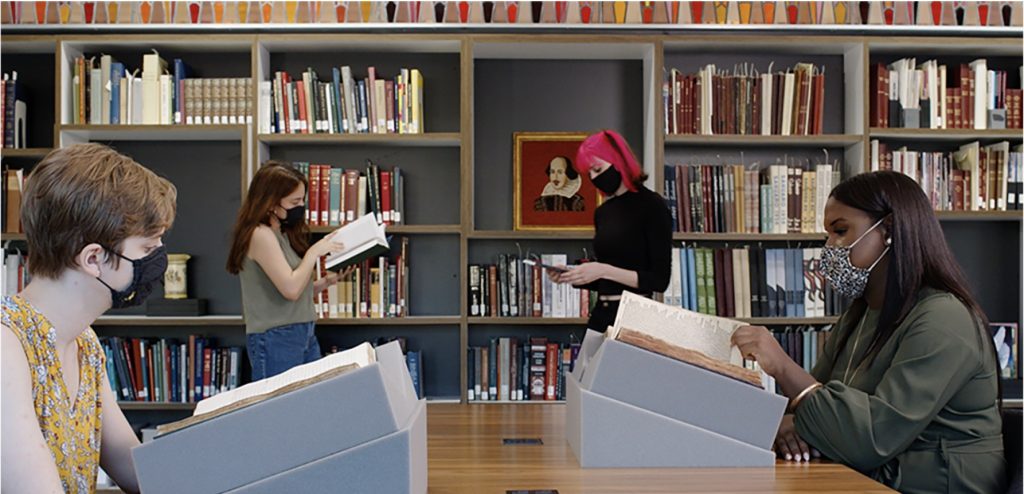
The University of California, Los Angeles (UCLA) – my alma mater – embraces the global turn in medieval studies. Under the direction of Zrinka Stahuljak, there have been major structural changes, allowing for radical reimagining of what medieval and early modern studies can entail. Notably, what was long known as UCLA’s Center for Medieval and Renaissance Studies has been renamed as the CMRS Center for Early Global Studies. This reflects a major disciplinary shift as the field wrestles with periodization in a global context. By replacing the terms “medieval” and “Renaissance” with “early,” the Center’s new name asks scholars to be mindful of the field’s Eurocentrism and to move away from it. To quote the Center’s “About Page” on its website: “In order to counteract the varying periodizations across the globe, which do not fit neatly along European lines of division, the best term that accommodates the periods under the Center’s purview is ‘early.’ The term ‘early’ circumvents the problem of always centering time periods in relation to modernity and thus avoids the pitfalls of teleology, of working on the presumption of progress from the past to the present.”[2] What at first glance may seem like a minor name change is part of a larger paradigm shift for other institutions to consider following in order to expand the field in exciting ways.
To underscore this shift, the Center has made great strides in highlighting work that considers the Americas, Asia, and Africa which have been overlooked given previous Eurocentric approaches to the Middle Ages. In fact, the Center, in collaboration with UCLA’s American Indian Studies Center, recently received a $1 million grant from the Mellon Foundation to support a project called “Race in the Global Past through Native Lenses.” This grant validates the Center’s inclusive, global approach that decenters Europe and allows for two fields that rarely intersect – indigenous studies and premodern studies – to come together in a way that breaks down typical academic and disciplinary divides. This is just one example of the innovative work that can come from bridging gaps across areas in the name of better understanding of global contexts.
This work connecting the Middle Ages to broader contexts and disciplinary approaches is not limited to academic spaces. Medievalists understand that this research has a great deal of potential, and exciting public-facing projects have been launched. For instance, the Newberry Library in Chicago currently has a thoughtfully curated exhibition called “Seeing Race Before Race” on view. The exhibit is about race from the Middle Ages to 1800 and draws primarily upon European sources and objects to trace the roots of racializing discourses. As part of Professor CJ Jones’s course “German Before Germany,” we will be taking undergraduate students from the University of Notre Dame to see the exhibit in early December before it ends. It is one thing to talk about race and the premodern context in a classroom setting or among other scholars. Experiential learning, which the Newberry Library exhibit offers, allows for students to interact with cultural productions and connect what they witness with the context they have gained from class. Yet, visitors to the Newberry Library’s exhibit should not feel like they need to have taken a college-level course to understand it. Exhibits are designed to be approachable. They are a powerful way to open up cutting-edge scholarship to those in and outside of academic spaces. Indeed, the “Seeing Race Before Race” exhibit welcomes and allows for wide audiences – not just students, researchers, and scholars – to process this information for themselves with the help of carefully written didactic materials as guides.
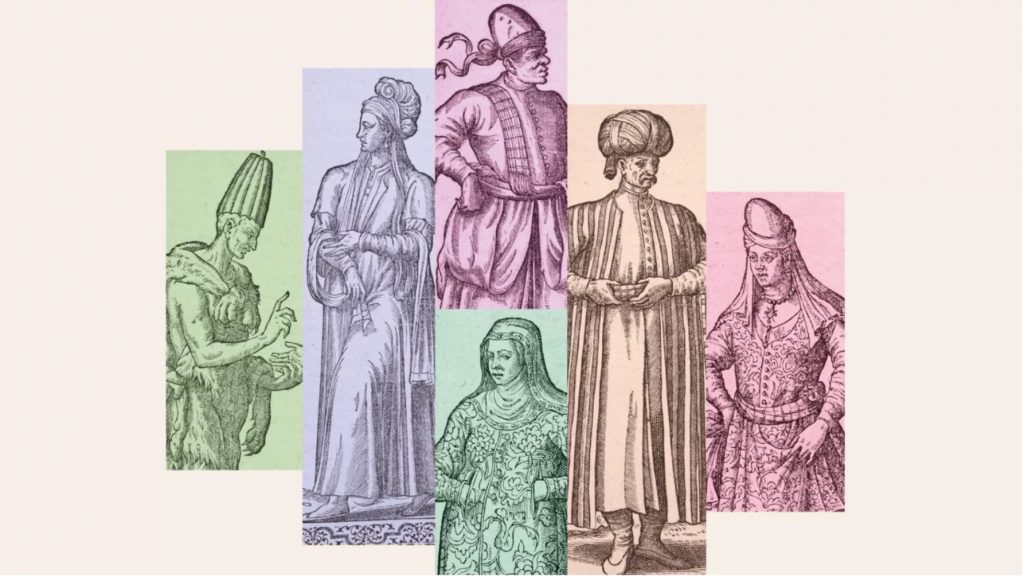
The Medieval Institute at the University of Notre Dame takes public engagement and outreach a step further by tapping into the local community, thereby decentering academia as a space for encountering medieval studies. My position at the Medieval Institute allows me to be involved in events like our football tailgates, which has us interacting with hundreds of people. These crowds arrive on campus eager to cheer on the Fighting Irish and are pleasantly surprised to learn that the Medieval Institute exists. Over some food, drink, and medieval-themed entertainment, my colleagues and I have had the pleasure of talking to people from all over about the work we do at the Medieval Institute. Some people are regulars who say they look forward to our tailgates year after year since we started them in 2018. Others are first-timers, and their encounter with us at the tailgate is when they learn that we exist. I enjoy the awe in people’s voices and eyes as their curiosity about why we would host these tailgates gives way to genuine interest about our programming and work. A fond memory I have involves a brief interaction with a guest. He asked me about the geographic scope of the Middle Ages. I responded that many scholars work beyond the confines of modern-day Europe and conduct research on Asia, Africa, and the Americas. The visitor was so impressed by the field’s reach and wanted to learn more. This brief experience affirmed that our presence at these tailgates is a powerful work of outreach. By being approachable, warm, and inviting, we invite people from all walks of life to pursue learning more about the Middle Ages. We show people that the Middle Ages can be accessible and fun!
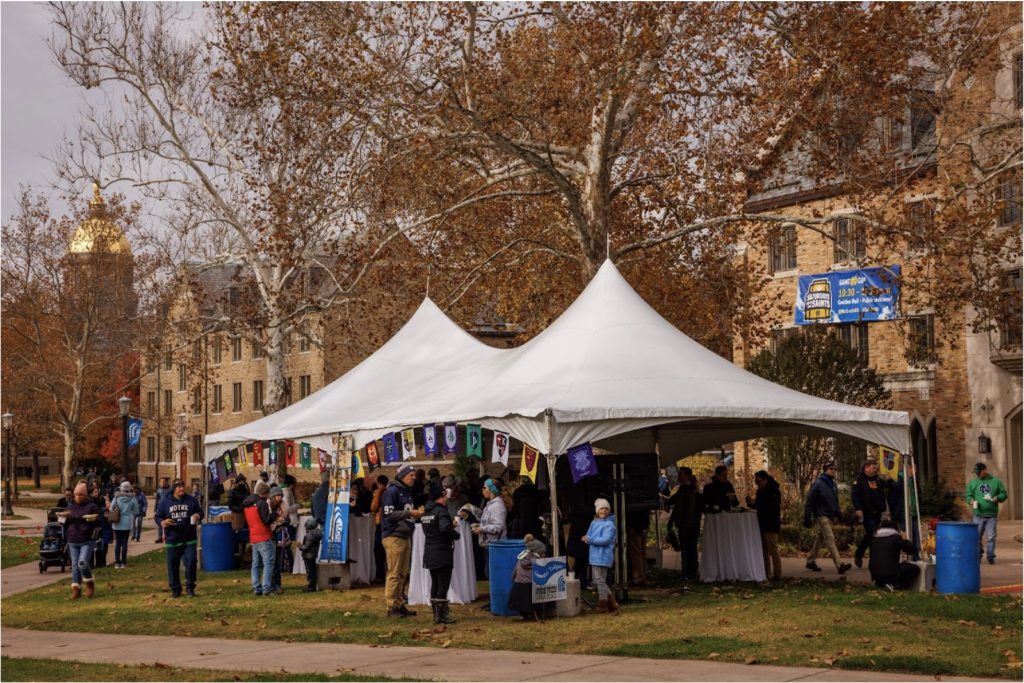
A major innovation that the Medieval Institute has implemented is a course at John Adams High School called “Why the Middle Ages Matter.” This elective course is the exciting result of collaborating with John Adams High School and the South Bend Community School Corporation, allowing enrolled students to get a taste of what it is like to learn from the array of experts who work at the University of Notre Dame. This upcoming spring will mark the course’s third iteration and the first time that I will be leading the course. My inimitable predecessor as the Public Humanities Postdoctoral Fellow, Annie Killian, led the course for its first two years, thereby paving the way for me and future Fellows to introduce curious, excited students to the Middle Ages and the wealth of resources that Notre Dame has to offer.
As I finalize the syllabus for the course, I cannot help but wonder about my future students. What assumptions about the Middle Ages will they bring with them to the course? What have their previous encounters with the topic been like? With this being the third time the course happens, what have students shared with their peers about it? I find myself sensitive to the powerful potential of this course. Students will learn about a more global, interconnected Middle Ages, thereby benefiting from the generative global turn in medieval studies. They get to do this with an incredible amount of support. There is the mighty institutional support that comes from the University of Notre Dame. Students will be led on special tours of the university’s Rare Books & Special Collections as well as the soon-to-be-open Raclin Murphy Museum. Guest lectures led by world-renowned scholars will whet their appetite for learning and introduce them to what humanistic research looks like. I am in awe of this course, which breaks down academic and structural barriers so that public school students can access and benefit from a world class institution that lies in their backyard. We are doing so much to empower the students at John Adams High School not only to embrace learning about the past but also to see themselves as welcome to academic spaces. This is a powerful way for us to demonstrate a commitment to making humanistic inquiry accessible to a diverse audience.
It is no surprise that someone whose current position as a public humanist would embrace these efforts that the field and various institutions are undertaking to make major changes to medieval studies. I am so buoyed by what is happening in the field. The crisis that Sierra Lomuto identified cannot hold – indeed, something has to give. What is emerging from this reckoning is an opening up of medieval studies to generative research directions as well as to broader audiences. This work reminds me of the reality of the humanities: it is of the people and for the people. As medievalists, the future of our field depends on us embracing change as well as remembering that our work does not exist in a vacuum. Rather, our work has major consequences for how people can come to understand the world: past, present, and future.
Anne Le, Ph.D.
Public Humanities Postdoctoral Fellow
Medieval Institute
University of Notre Dame
Footnotes:
[1] Lomuto, “Belle da Costa Greene,” 1-2.
[2] “About,” UCLA CMRS Center for Early Global Studies, https://cmrs.ucla.edu/about/.
Works Cited:
Lomuto, Sierra. “Belle da Costa Greene and the Undoing of ‘Medieval’ Studies.” boundary 2 50, no. 3 (August 2023): 1-30.
UCLA CMRS Center for Early Global Studies. “About.” https://cmrs.ucla.edu/about/.
Further Reading and More Information:
Medieval Institute at the University of Notre Dame. “Community Engagement.” https://medieval.nd.edu/community-engagement/.
Smulyan, Susan. “Why Public Humanities?” Daedalus, the Journal of the American Academy of Arts & Sciences 151, no. 3 (Summer 2022): 124-137.
Stanford Humanities Center. “Interview with Zrinka Stahuljak.” https://shc.stanford.edu/arcade/interventions/interview-zrinka-stahuljak.

